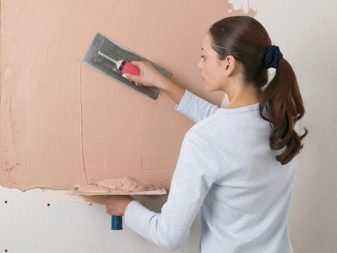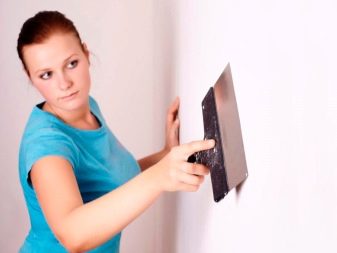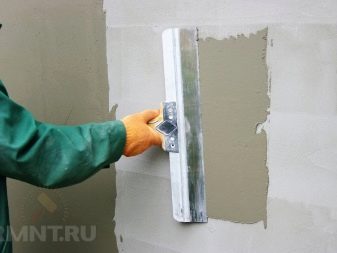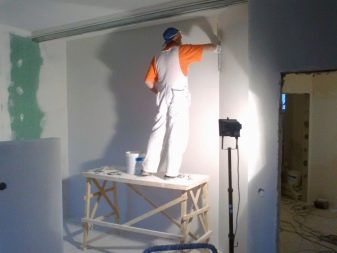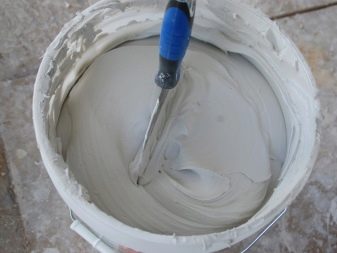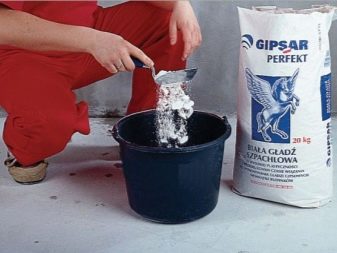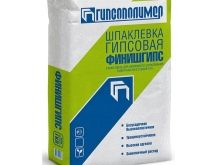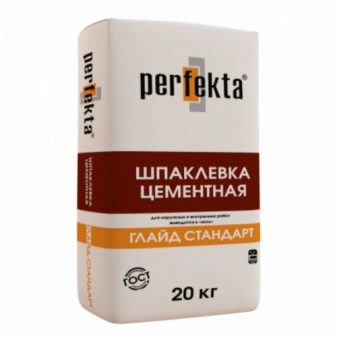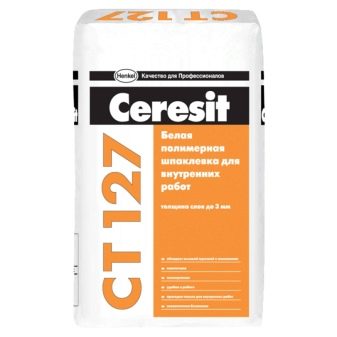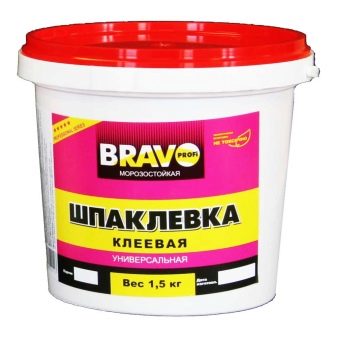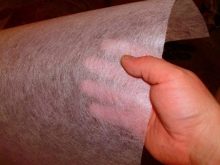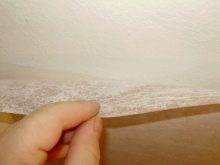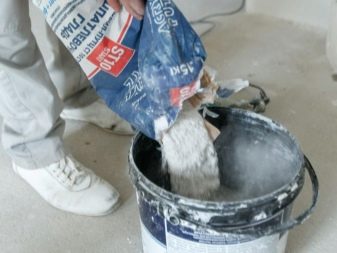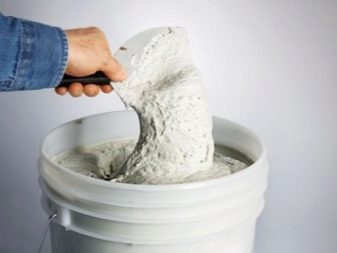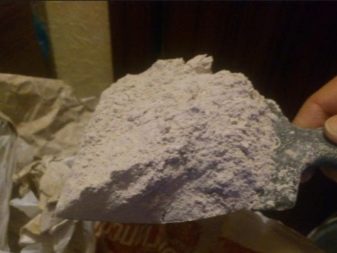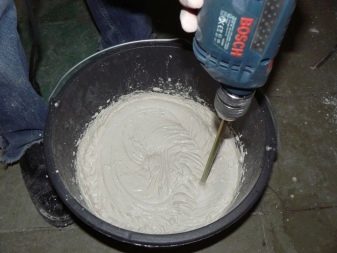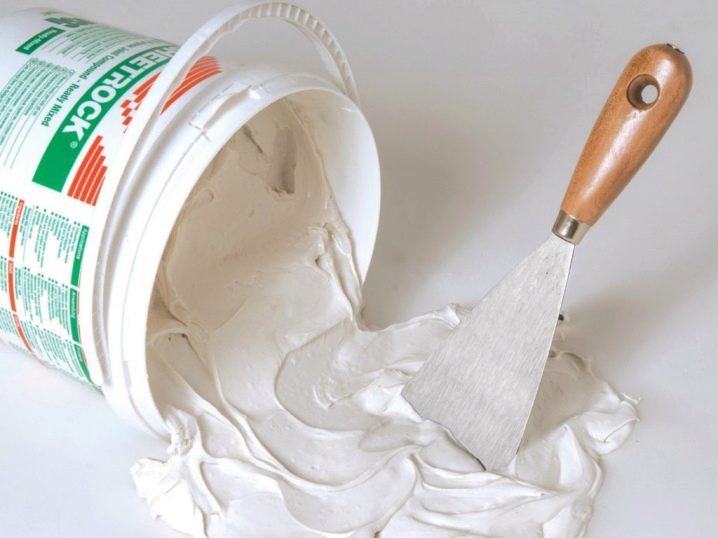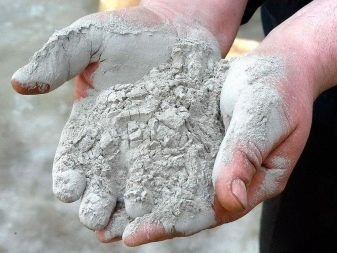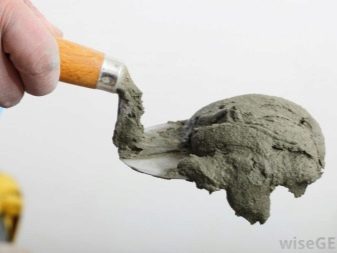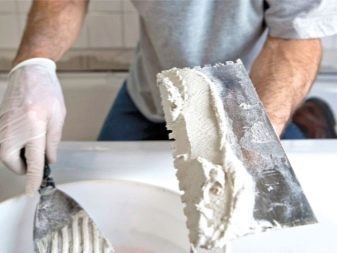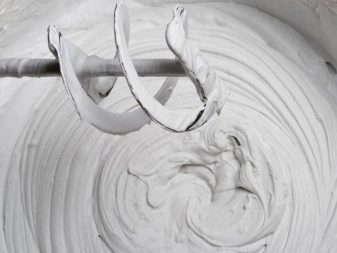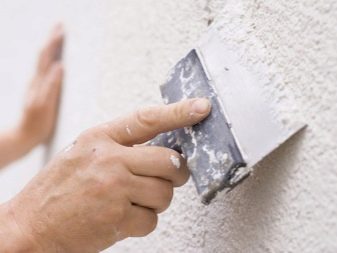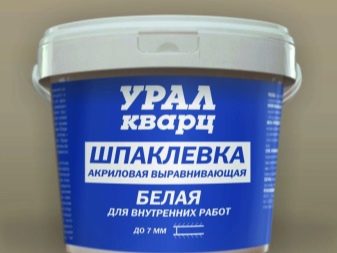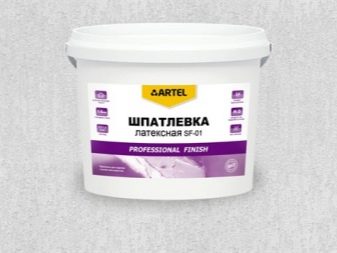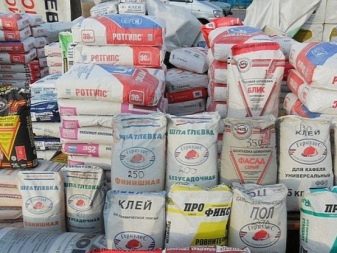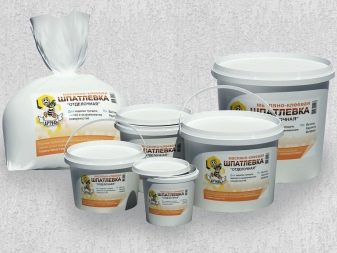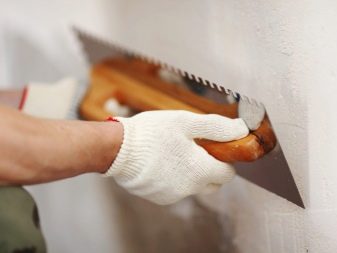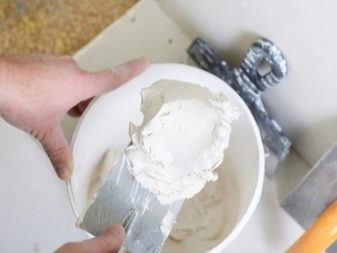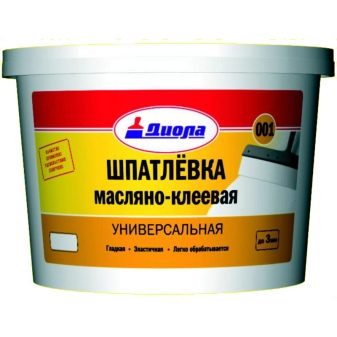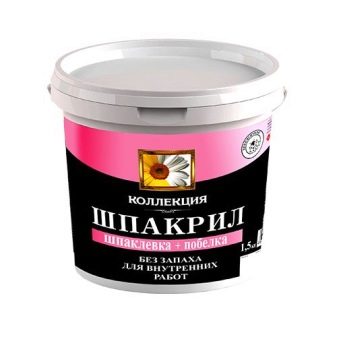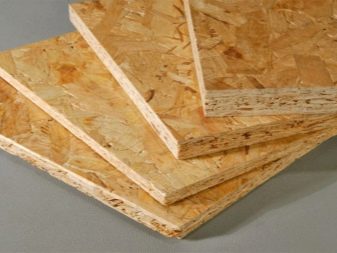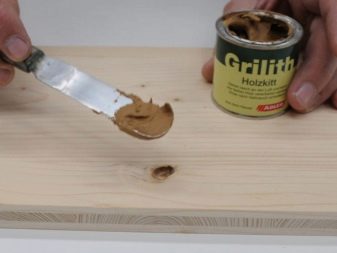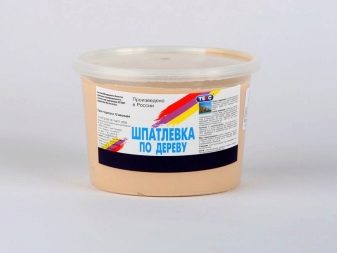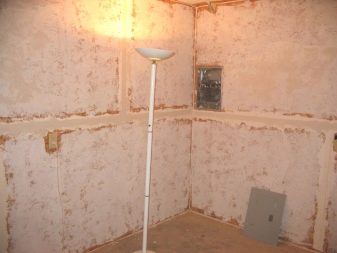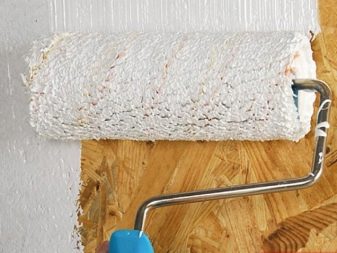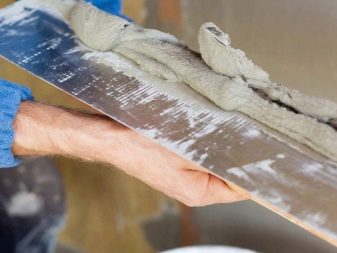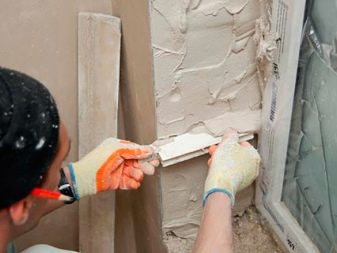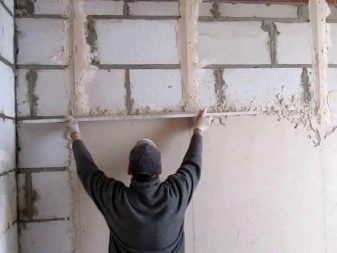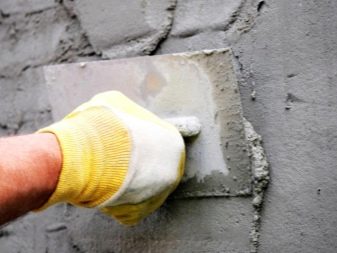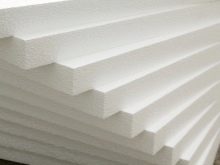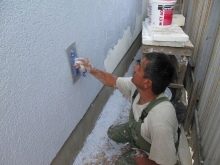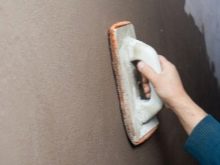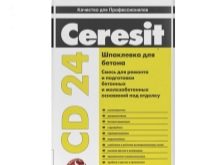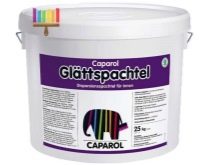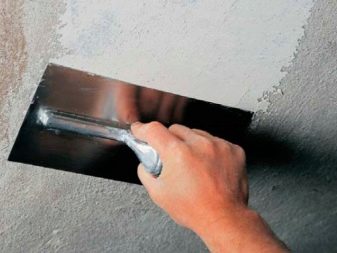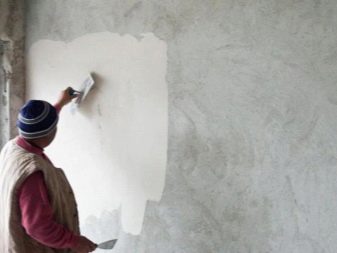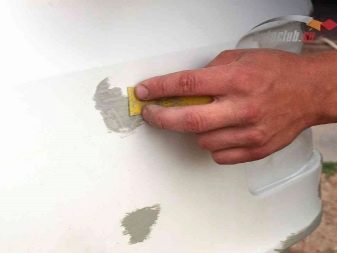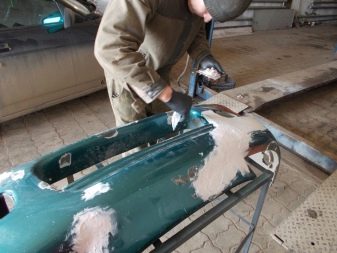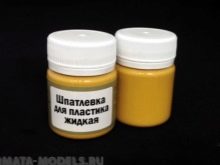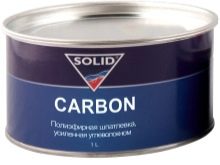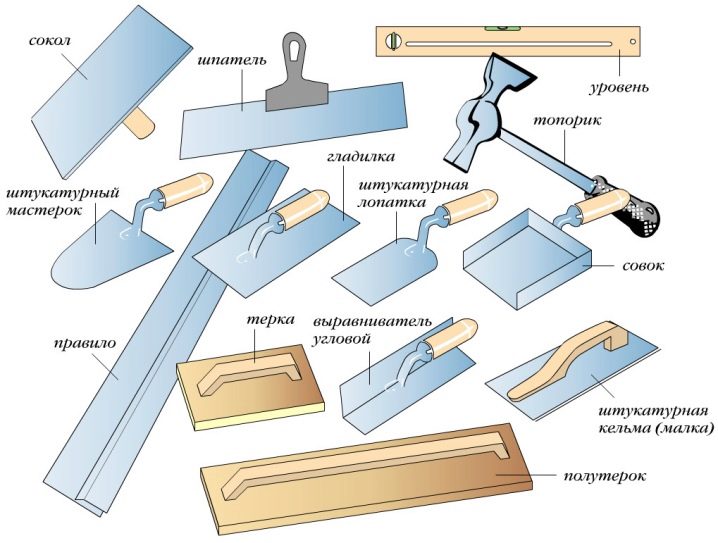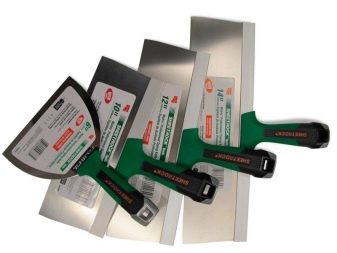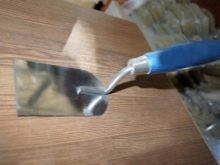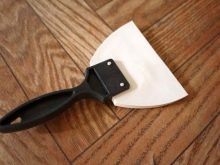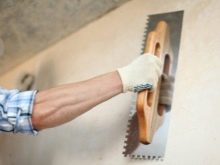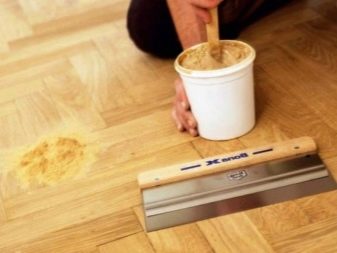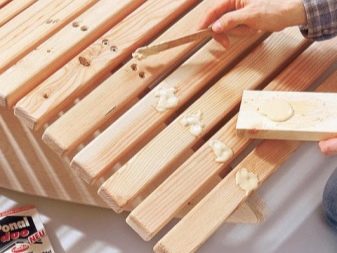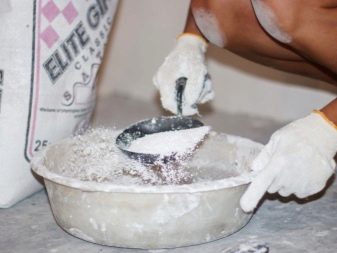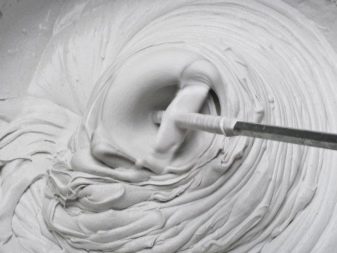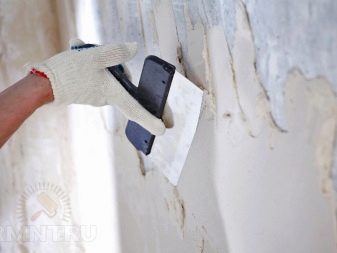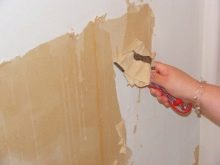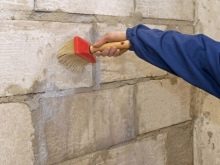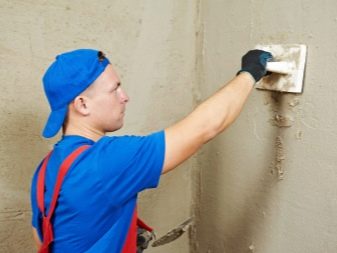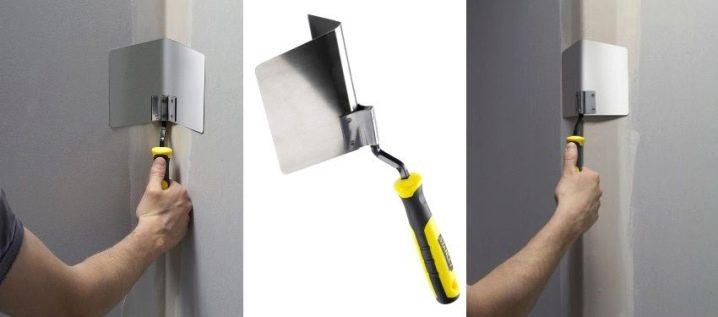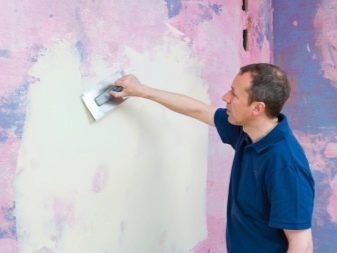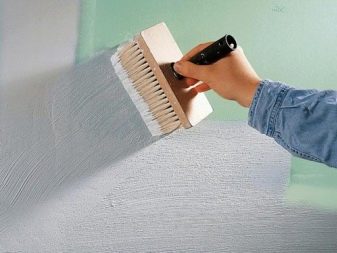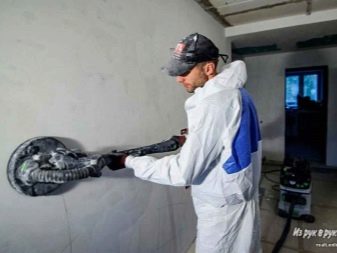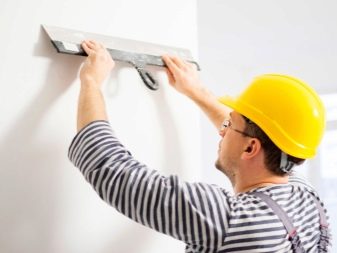How to putty the walls: the details of the process
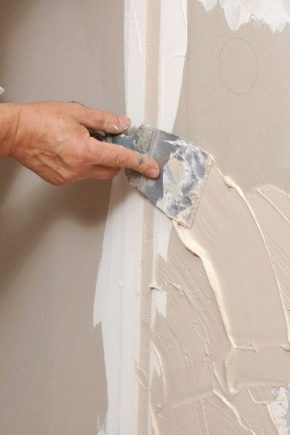
Putty walls - a difficult process and time-consuming, but very important. Is it possible to putty your own hands? How to putty and how to align the walls with putty, you will learn from this article.
Before you start any construction work in an apartment, house, cottage with your own hands, you should think over everything thoroughly and find out in detail about all the intricacies and peculiarities of the process. After all, each incorrectly executed construction manipulation can ruin the entire repair, as well as entail additional financial costs.
Special features
Comfort and beauty in the apartment begins with the repair. Filling of walls is a small component of the big business. In the preceding redecoration of the apartment room you need to properly prepare. The main preparation is the alignment of surfaces with the further application of paint and wallpaper on them. Sometimes it is necessary to putty walls in order to level the base, to increase its strength and reliability. Properly prepare the surface - this means to remove all dirt and make a full cleaning.
The process of putty walls has a lot of features. This type of material that will be used in the process of work, and the type of putty, and the surface that will be subject to the process of puttying, and much, much more.
Composition
Putty - building material in the form of paste or powder. Its composition can be quite diverse. It contains laundry soap, flour, carpentry, animal glue, sieved gypsum, various varnishes, drying oils, talc, chalk, barite, zinc white, ocher, soot, kaolin, asbestos and red lead.
Depending on the type of putty and its main filler, auxiliary components such as desiccants, natural drying oil, esters, acrylic acid, salt, plasticizers, calcium carbonate may be included.
According to the presence of film forming components in it, it is divided into three groups:
- Gypsum;
- Cement;
- Polymer
Gypsum putty consists of gypsum. It is plastic and resistant to high humidity. If we talk about the physical properties of the material, it looks like a white powder with a density of 2.4. Strength ranges from 3 to 15. When it hardens, gypsum begins to expand and its volume increases by 1%. The strength of the material is ensured by the use of low pressure and saturated steam.
Scope of plaster putty:
- large cracks;
- the seams on the surface of the concrete;
- gypsum boards;
- bricks.
Cement putty, unlike plaster, hardens more slowly. Therefore, it is made in large volumes and surface treatment is accelerated. But it is worth remembering that it has the property of sitting down, so the layer of application must be thick.
The polymer mixture does not shrink and does not allow moisture to pass through. This species is the most expensive of the three listed. Its basis is adhesive polymeric binder.
Putty can be prepared at home.
Below are a few recipes for making the solution yourself:
- Oily putty. For its production, you need to take one kilogram of drying oil, one hundred grams of desiccant (NF-1) and two kilograms of chalk.
- Glue filler. To make it, you need to mix 1 kg of 10% glue solution with 25 g of linseed oil and add to this 2 kg of sifted chalk. In the heated glue add linseed oil and mix thoroughly, then pour chalk.
Also, putty is divided into water-soluble and water-insoluble.
But whatever the ideal composition was not at the putty, in no case can not be applied to the walls, painted with water-based paint.
The result of such a big mistake will be wasted time, because the putty will not stick on it and will disappear. More on the components of the putty depends on the possibility of its application on fiberglass.
Kinds
When the time comes to choosing a putty, the consumer is lost and does not understand what exactly you need to buy and what you should pay attention to. After all, puttying walls during repairs is a very important stage, so before you buy anything, you should carefully study all types of putties.
Filling for walls is divided into two categories:
- dry;
- ready to use.
Dry mixes for leveling walls are given more preference. They are implemented in bags and packages.
The advantages of this type include:
- Easy to prepare.
- The possibility of making a solution of the necessary viscosity.
- Easy storage, easy transportation.
- Affordable price.
- Long shelf life is long.
- Not afraid of changes in temperature.
Each building material has its pros and cons.
The disadvantages of dry mixes include:
- A waste of time to prepare the filler solution.
- In the process of cooking, you must strictly follow the instructions.
- The timing of the finished working mixture is very limited, so you often have to prepare a fresh portion of the solution.
Ready-to-use putties are sold in plastic buckets or cans.
This building material has its positive aspects:
- No time frame for the use of the solution.
- Do not waste time on the preparation of the working mixture.
Among the ready putty for walls you can find the following varieties on the shelves of building stores:
- Cement.
- Gypsum.
- Polymer.
The basic basis of cement putty is cement. This type of mixture is familiar to builders since the days of the USSR. It has a gray color and several marks. For the facades are applied more reliable brands that have high strength.
The scope of their application - the walls of the facades of buildings and interior walls of rooms with high humidity. The occurrence of microcracks is allowed. They are cold-resistant, because they contain antifreeze. The only, but significant drawback of cement putty is a strong degree of shrinkage.
Gypsum solution has a white color, in any case, a mixture of foreign manufacturers of white. Domestic mixtures may have a yellowish tint, since the production uses gypsum from local deposits, but it is not of pure white color. The place of use is the walls on which the wallpaper will be glued or to be painted. Not applicable in bathrooms, toilets and pools. It does not tolerate cold temperatures, so it is appropriate to use only indoors. ASB made in Turkey and products of the world famous Knauf concern are considered to be an exemplary example of gypsum putty.
Gypsum mortar is an ideal building material for use in rooms where people live, because it is environmentally friendly, does not emit harmful substances and has the unique function of maintaining an ideal microclimate in the house.
Polymer type putty refers to innovative materials that have recently appeared on the market of building materials.
Polymer putty has two varieties:
- acrylic;
- latex.
Acrylic blend is easy to use. It is applied both to front works, and to internal. It is called a universal mixture and is used as a roughing, leveling and finishing finish. Its basis is acrylic, and it is known to belong to the class of synthetic substances, which means that acrylic putty has a number of advantages over the gypsum and cement mixture. For example, acrylic perfectly reacts with the components that make up the cement slurry, and this gives the finished material strength and smoothness. This mixture is absolutely resistant to frost.
If the filler is slightly dried, then a little refresh and dilute it with ordinary water.
Latex putty is used exclusively for interior work. It does not shrink and is very elastic, so it can be applied in a very thin layer. It is used on all surfaces, including metal, which cannot be said about other types of similar materials. Polymer putty is a costly expense for materials, but the result is up to expectations. When purchasing it, you need to be careful, because there are many fakes of this type of mixture on the market.
Among the shortcomings can be identified one - latex putty does not breathe. However, it contains antiseptics, antifungals and anti-corrosion agents.
By appointment putty material is divided into the following types:
- Leveling;
- Finishing;
- Specialized;
- Universal.
The leveling compound is used to level the surfaces. She has excellent adhesion with the base, so it lies down evenly and smoothly. It has high strength.
The finishing mixture serves as a preparatory basis for decorative wall decoration.
Specialized mixtures perform specifically assigned tasks - elimination of panel joints, urgent repair work.
Universal mixtures perform all the functions of the previous types of putty and are used at all stages of work and practically on all surfaces of walls.
But buyers choose mixes, as a rule, starting from material cost.
The most familiar classification of putties for buyers is their division into:
- starting;
- finish line
From the technical point of view, their main distinguishing feature is the size of the filling fraction. In other words, there are grains of quartz sand in the starting material that fill irregularities and cracks. They are much larger than those contained in the finishing putty. Accordingly, the starting mixture is applied in a thicker layer. The only problem with which there are problems is the grouting of the applied starting mixture. This is usually done with grinding tools. You should not wait for a perfectly smooth and smooth surface from the starting putty, but the finishing mixture gives this effect.
In practice, these two types of building mixture are used in tandem. First, the starting mixture is applied, and then, after it is completely dried, a finishing putty is applied.
In addition to all of the above types of putty, there are some more:
- Glue.
- Oily.
- Oil-adhesive.
- Shakril.
These species are highly specialized and are used mainly by professionals only.
Surface types
For each surface it is necessary to select a certain type of putty.
OSB slabs
OSB plate is a wood, chip, multi-layered surface, which has noticeable roughness. To level them, it is necessary to puttying the surface.
The ideal option for this would be a leveling putty designed to work on wooden surfaces. It is forbidden to use material intended for leveling surfaces made of brick or concrete. It will be useless labor - putty will simply disappear.
For this fit:
- Mixes with oil-adhesive components. In their composition there are oil varnishes, natural linseed oil and auxiliary fillers, which are similar to wood structure. These mixtures include LS-1 and LS-2. If the wallpaper will be glued to the putty in the future, then it is possible to replace the putty mixture with a glyptal lacquer (M-175) or paints with fillers.
- Mix with adhesive composition. The basis of such mixtures is oil, glue solution and plasticizer. Such mixtures are similar to putties that can be made at home.
- Nitro putty. This is a mixture that dries very quickly. Their composition includes cellulose ether, and resin, and plasticizer, and solvent. The most popular types of nitrospacking are ASH-32 and MBSH.
But besides the special modification Putty for OSB-plates should be endowed with a number of special characteristics:
- Excellent adhesion, already mentioned.
- Homogeneous consistency The composition should not be large particles.
- Low shrinkage. This significantly reduces the time for repairs.
- Increased hardness and grinding.
- The possibility of applying to it the coloring matter and gluing wallpaper.
Slopes
In order to create high-quality slopes and look aesthetically pleasing, they need to be properly puttied, and this requires a suitable putty mixture.
So, if the slopes are inside the room, where the temperature is normal and there are no significant differences, then you need to choose a putty with a fine fraction,which will make the coating perfectly smooth and even.
For slopes on the outside, where there are temperature drops, you need to apply putty with a large fraction. It must be resistant to high humidity and frost resistant. The ideal choice is cement mix.
Foam blocks
Putting a foam block surface is a responsible and difficult job, since this surface has significant irregularities.
To putty was high quality, you need to buy a mixture with the following characteristics:
- cement base;
- mineral aggregates;
- functional auxiliary components;
- increased ductility;
- frost resistance;
- resistance to moisture.
Styrofoam
Many people are interested in issues related to the filling of polyfoam, since the insulation of houses outside and inside with this material is a relatively inexpensive procedure. To protect the foam from external factors (sun, moisture, frost, mechanical stress), it must be puttied.
Apply to putty of polyfoam:
- universal blends;
- special blends with polystyrene components.
This type of putty should have the following characteristics:
- Increased adhesion. The presence in the composition of the putty glue.
- Purpose for internal / external works.
- Resistance to temperature changes.
- High moisture resistance.
The most popular in the market of building materials are putty mixtures "Master", Polimin, Ceresit. The ideal choice is cement based putty.
Concrete surfaces
On the quality of the filling of the walls depends on the repair in the apartment in general, because on the putted walls in the future will be glued wallpaper or paint applied. It is not necessary to puttying only if ceramic tiles are laid on the concrete walls.
Putty concrete walls need for two main reasons:
- To align.
- To reduce the absorption of concrete.
Choose a dry mix for putty needed, starting from how rough the walls are. For the procedure it is necessary to buy both the starting mixture and the finishing one. Starting putty should be coarse-grained, and finishing - fine-grained. The most popular mixtures for concrete surfaces are Knauf, Ceresit, Caparol.
The main characteristics that should be putty for concrete surfaces:
- instant grasp;
- high strength;
- the presence of waterproofing function;
- sea resistance;
- high elasticity;
- no shrinkage;
- thixotropy - the ability to increase viscosity;
- water resistant
Rapid setting is necessary, as the putty is applied with a thick layer (3-5 cm). Elasticity will help penetrate the solution into all the cracks.
The mixture should be based on cement, but it is strictly prohibited to mix it with other substances, since all basic properties will be lost.
Plastic surfaces
It is most difficult to putty plastic surfaces, as many people who come across this process think. In this case, the putty performs repair functions, eliminating defects and irregularities before painting.
Putty for plastic surfaces must have:
- high elasticity;
- the highest degree of adhesion with respect to many polymers;
- increased resistance to impact;
- high hydrophobicity;
- succumb to grinding.
So, this mixture is a fine-grained composition of several components, including resin and hardener. It is forbidden to use putty on thermoplastic, nitrocellulose, acrylic coatings.
Among the varieties of putty for plastic distinguish:
- liquid;
- carbon;
- with fiberglass.
Instruments
For high-quality plastering of walls in a room, you need not only a good putty mixture, but also properly selected tools.
During the process you will need:
- Drill or industrial mixer. If you get dry putty, you will have to prepare the solution yourself from it. To get a uniform consistency, you need a special mixer or a drill with a nozzle.
- Application of the solution on the wall using a spatula. Usually a set is bought that includes many different shapes of spatulas - on a flat surface one type is needed, and in hard-to-reach places another form of a spatula is more convenient.
- Rollers and brushes necessary for priming. It is not recommended to exclude such a procedure, since it performs a protective function.
- Level. It is necessary to determine how smooth the walls are.
- Sandpaper. When detecting any inaccuracies and irregularities on the treated surface, they are eliminated. Sandpaper is required for this.If the amount of work is large enough, then it is recommended to use a hand-skinner. When using starting putty, coarse sandpaper will be more convenient, and if finishing putty is used, it is more convenient to use fine paper of small fraction.
- Capacity for mixing solution. Since the portion of the finished putty is kneaded slightly due to its rapid drying, the capacity can be bought small.
Before you choose and buy a spatula, you need to try to apply it. It turns out that this is not so easy, especially for beginners. It is more convenient for some people to use an ordinary roller. But according to builders with great experience, it is not very convenient for them to putty walls, as it is difficult to achieve perfectly smooth surfaces.
As for the choice of spatula, here it is necessary to pay attention to the following details:
- front roller has a considerable width and size of the blade, and the paint roller is smaller with a narrow blade;
- the spatula handle must be strong so that after the first use it does not remain in the hands of the master;
- The most comfortable tools are rubberized handles;
- painting spatulas quickly fail;
- the ideal width of the blade is 50 cm; for hard-to-reach places, blades up to 15 cm wide must be used;
- a lamp or a small lamp is needed, with the help of which all irregularities and flaws after filling are determined. It is better to use for this purpose a halogen lamp;
- a construction knife and a stapler should be on hand.
If we talk about sets, then the right thing to do is to choose a set that includes tools of 5, 15, 40 and 60 cm. To install even corners, you can purchase an angular spatula, but only an expert can use it for its intended purpose.
Preparation of the solution
It is known that you can buy ready-made mixture or ready-made solution for puttying, and you can make it yourself.
To make gypsum plastering at home you will need 2-3 kg of chalk, a kilogram of gypsum, 5% solution of wood glue. We mix chalk with plaster, then this mixture is gradually poured into glue previously poured into a bucket and thoroughly stirred, so that a homogeneous mass is obtained. Such a solution very quickly becomes solid, so it is better to prepare it in small quantities.It is used on concrete surfaces, for masking drywall seams, but only in rooms where humidity is not elevated.
Oil putty itself can also be made. To do this, you will need a kilogram of linseed oil, 100 g of desiccant (to speed up the process of hardening) and two kilograms of chalk powder. Mix all ingredients until a smooth consistency is obtained. This solution is not afraid of temperature changes and high humidity. It is used on surfaces made of wood, as well as on walls that will be painted with oil paints.
To make a solution from the purchased putty mixture is a snap.
Below is a step-by-step instruction, by adhering to which you can get a quality solution for filling walls:
- In a plastic bucket pour pure water at room temperature, about a quarter.
- Slowly pour the dry mixture into the water. The quantity must comply indicated in the instructions.
- Using a mixer, beat everything until a homogeneous mass without visible lumps is obtained.
- Let the solution stand for 5-10 minutes.
- Then mix well and can use.
In appearance, such a solution should resemble thick sour cream - this is a very important detail, since neither excessive density nor excess liquid will give a qualitative result when used. A layer of putty thick batch will disappear immediately, and the liquid will simply spread.
It is important to remember that in one mix of the solution should be as much as 40 minutes of work.
If during work the finished material has not been fully used, it can be poured with water and not stirred, and when needed, drain the water and apply further. This applies to polymer dry mixes.
Foundation preparation
Before you begin to putty the walls, you need to prepare them properly, because the result of the work depends on it.
Preparing a wall for putty means removing all contaminants., old paint, carbon black, grease stains, wax, old plaster. Mechanical cleaning is performed using a special rigid brush, spatula and grinder. When all the garbage is removed, it is the turn of chemical cleaning of the wall, which consists in degreasing surfaces. It is performed with the help of special detergents. Do not be over the use of anti-fungal drugs.
If there is rust on the walls, then an ordinary burner will help to remove it. The final stage of preparation is to check for large irregularities on the wall. Large are the differences of five millimeters or more. The problem is that the middle layer of putty is two millimeters, so you have to smooth out large irregularities, and only then putty. For covering up large irregularities it is cheaper to apply plaster, and then engage in putty.
Application details
If the walls in the apartment have to be putty with your own hands, then in order to get a positive result and calmly continue the repair, you need to learn all the nuances of applying the putty solution. The process technology seems difficult only at first glance.
Puttying begins with cosmetic leveling. For this, the starting mixture is always used. It is necessary to apply the solution in a thin layer of one centimeter. The treated surface must be completely dry. It takes 10-12 hours.
If you see that there are no dark spots on the wall, it means that everything has dried out and you can continue to putty.
Now you should apply the finishing mixture.The technique of applying the finishing putty differs from the technique of applying the starting solution. The mixture is applied in two different directions, thus all irregularities immediately become noticeable. From the first time, they will not disappear, especially with regard to the surfaces of drywall and concrete, but in 2-3 times everything will be eliminated.
In hard-to-reach places, use a spatula of a suitable size. For many, difficulties arise at the moment when the process of leveling the corners takes place. In the process of work, there comes a time when every corner needs, as it is called, to press in a corner, and then to putty it.
If the corner is inserted incorrectly or not deep enough, there are problems with putty.
Another peculiarity of puttying is faced with bark by people doing repairs on their own - painted walls. A logical question immediately arises - is it possible to putty on paint?
This is possible only if:
- Walls are not painted with emulsion paint. Check it out is easy. It is necessary to moisten the sponge with water and rub the painted surface, if the paint starts to foam and rinse off, then it is emulsion and you can never put it on.
- If the paint on the walls does not peel off and does not crack, otherwise the solution will reject.
- If the paint is not based on the varnish.
But it is worth remembering that putty painted walls - it is a risk.
If, having studied all the details of the process or having tried to putty on his own, the person realizes that this is a complete disappointment and it is better to resort to mechanized puttying of the walls.
Mechanized putty is an innovative technology that came to us from the United States, which is to putty walls with the help of professional tools and appliances.
Useful tips
Before starting any construction or repair work, you should always ask advice from people who have already encountered this. Especially if with the help of plastering or puttying with his own hands and without the help of professional craftsmen the person came across for the first time.
When filling the walls should be aware that:
- Acquire materials and tools for putty need high quality.
- When buying dry mixes, dilute the solution only in accordance with the instructions.
- For each type of surface a specific type of mixture is applied.
- You need to clearly understand what will follow the finish of the walls after puttying.If wallpapering or painting walls, then putty is necessary if there are decorative panels or ceramic tiles, then there is no need for puttying.
- Particular attention should be paid to the fillet angles for which additional tools are needed.
- It is not necessary to put putty on high-quality plaster, only if thin wallpaper or painting is assumed. To do this, the walls must be perfectly smooth, which means that there should be a putty.
- If the room where the putty works will take place, the temperature is below five degrees, then it is not recommended to carry out work. The ideal temperature for puttying is + 15-25 degrees.
- To carry out any repair manipulations after puttying is possible only after a day. This is the maximum time for complete drying of the putty.
How to putty walls, see the video below.
